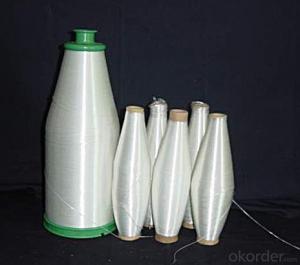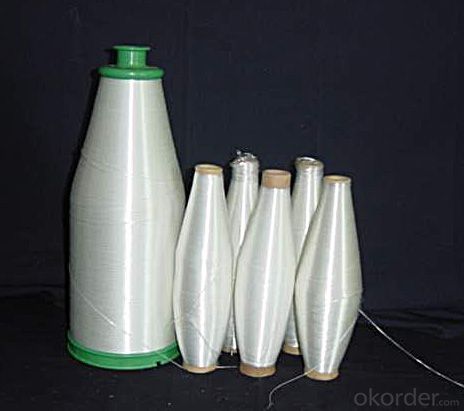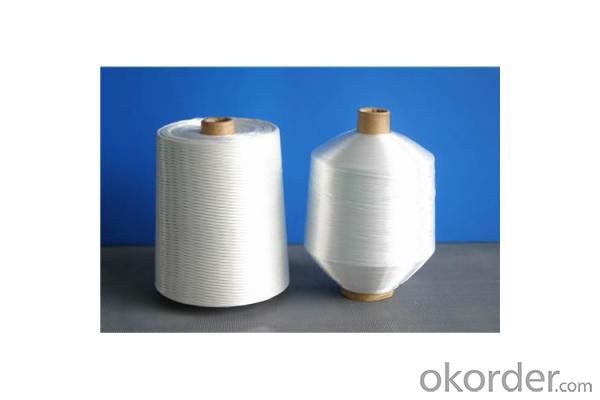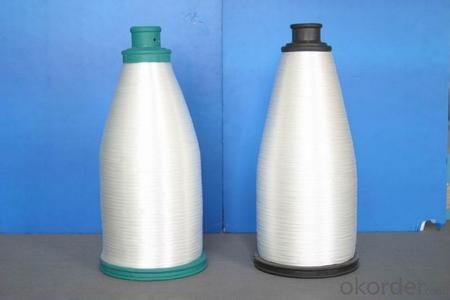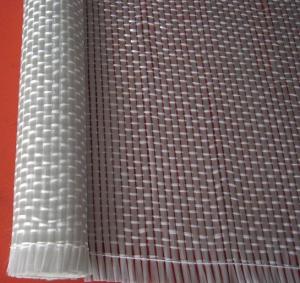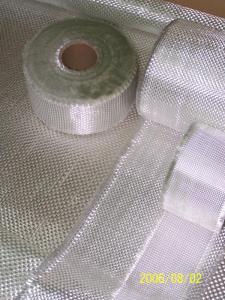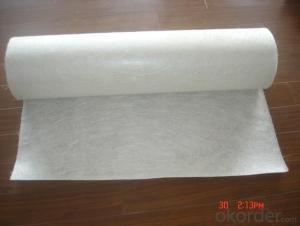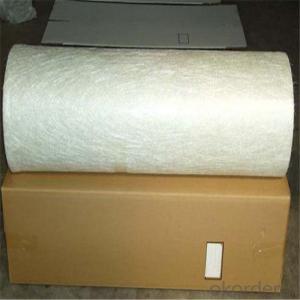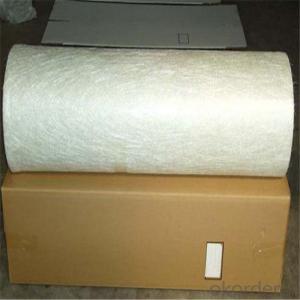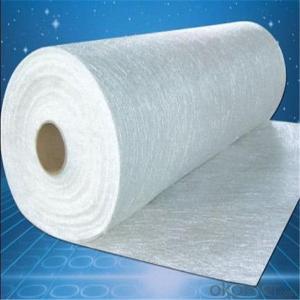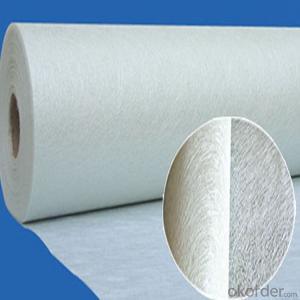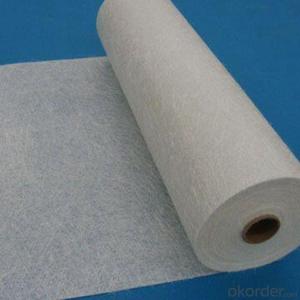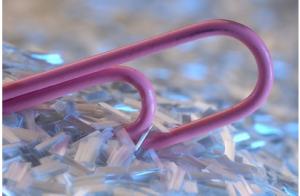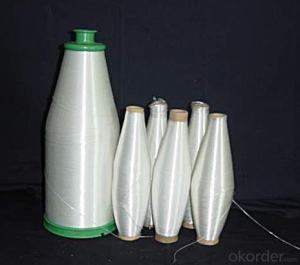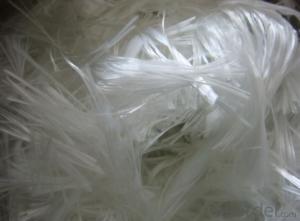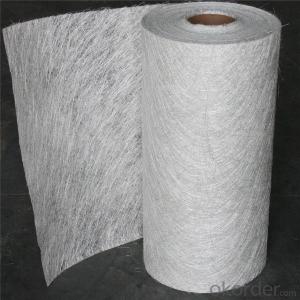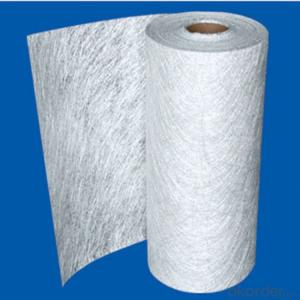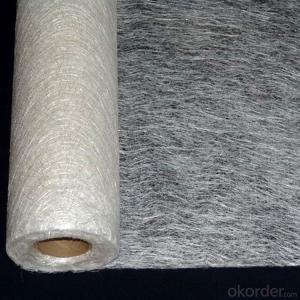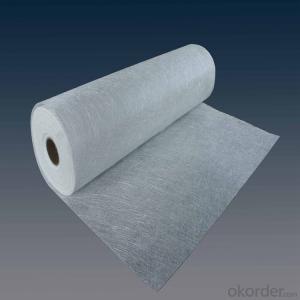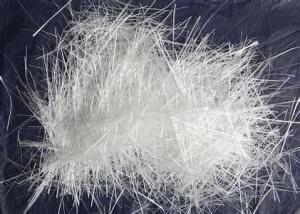Chopped Fiberglass Strands E Glass or C Glass Twisting and Plying Yarns
- Loading Port:
- Shanghai
- Payment Terms:
- TT or LC
- Min Order Qty:
- 20000 kg
- Supply Capability:
- 200000 kg/month
OKorder Service Pledge
OKorder Financial Service
You Might Also Like
Description:
C-or E-textile glass a kind of additional twisting and plying yam. With the characteristics of high strength, corrosion resistance, heat resistance and high moisture absorption, no-alkali yam has high electric insulation, so it used to produce weaved wires and cables’ wrap cladding, protection sleeve, train of mine, insulation materials of electric machinery, every yam of woven cloth and other industrial yam. It can also supply big and little paper cube and other cube yams with different shapes and different roll weight.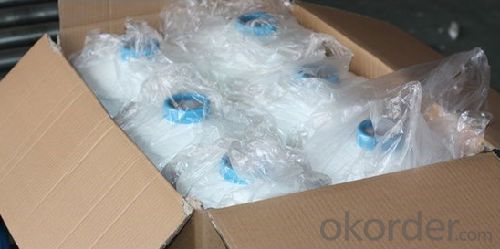 Product Features:
Product Features:
● Good Dispersibility.
● Less fuzzy.
● Density Even.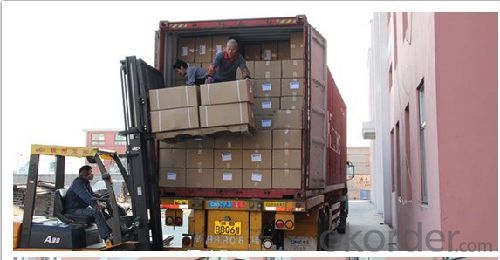 Product Specifications:
Product Specifications:
Product Code | Tex | diameter (um) | Sizing. | breaking strength | Twist |
CC7.5-22-1/2 110S | 44 | 7.5 | paraffin | ≥15.5 | 110±10 |
EC9-33-1/2 65S | 66 | 9 | ≥24.1 | 65±5 | |
EC8-25-1/2 65S | 50 | 8 | ≥19.2 | 65±5 | |
CC9-33-1/2 65S | 33 | 9 | ≥20.6 | 65±5 | |
CC11-44-6/0 | 264 | 11 | ≥81.6 | ||
CC11-44-1/3 110S | 132 | 11 | silane | ≥40.8 | 28±3 |
EC9-68-1/0 28Z | 68 | 9 | ≥18.0 | 28±3 |
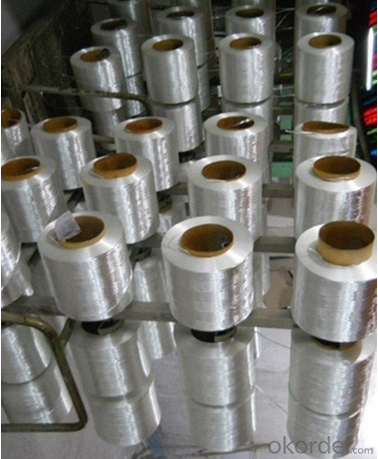
Packaging:
conforms to strict standards on packaging of every single cone to ensure customers' satisfaction, from inspection on appearance of cone, color difference, flaws, etc. before packaging to the selection of proper plastic bags, labels inside the cone, and carton packing.
- Q: What are the storage requirements for fiberglass chopped strand?
- The storage requirements for fiberglass chopped strand typically include keeping the material in a dry and temperature-controlled environment to prevent moisture absorption and maintain its structural integrity. It is also recommended to store the chopped strand in a well-ventilated area and away from direct sunlight to avoid any potential degradation. Additionally, it is advisable to store the chopped strand in its original packaging or in sealed containers to protect it from contaminants and ensure its quality is preserved.
- Q: What are the quality control measures for fiberglass chopped strand storage and handling?
- Quality control measures for fiberglass chopped strand storage and handling involve several key steps to ensure the integrity and performance of the product. 1. Proper storage conditions: Fiberglass chopped strands should be stored in a clean, dry, and well-ventilated area. The storage temperature and humidity should be controlled within specific limits to prevent moisture absorption or excessive drying, which can affect the quality of the strands. 2. Packaging and labeling: Chopped strand packages should be clearly labeled with important information such as product type, batch or lot number, date of manufacture, and expiration date. This ensures traceability and allows for easy identification of any potential issues. 3. Physical inspection: Quality control personnel should conduct regular visual inspections of the chopped strand packaging. They should check for any signs of damage, such as torn or wet packaging, which may indicate compromised product quality. 4. Sampling and testing: Regular sampling and testing of the chopped strands should be conducted to verify their quality. This can include tests for tensile strength, fiber diameter, strand length, moisture content, and other properties specified by the manufacturer or industry standards. 5. Documentation and record-keeping: It is important to maintain detailed records of all quality control measures, including inspection reports, test results, and any corrective actions taken. This documentation helps to track and verify the quality of the stored and handled chopped strands. 6. Training and education: Quality control personnel should receive proper training and education on fiberglass chopped strand storage and handling procedures. This includes understanding the specific requirements for different types of chopped strands and being aware of potential hazards or risks associated with improper storage and handling. By implementing these quality control measures, manufacturers can ensure that fiberglass chopped strands are stored and handled in a manner that preserves their quality and performance, ultimately leading to the production of high-quality fiberglass products.
- Q: Is fiberglass chopped strand suitable for the production of sports equipment?
- Indeed, fiberglass chopped strand proves to be a fitting option for the manufacturing of sports equipment. Recognized for its lightweight and durable composition, fiberglass stands out due to its exemplary strength-to-weight ratio, rendering it a superb choice for a range of sports equipment. Not only does it exhibit exceptional impact resistance, stiffness, and flexibility, but it also finds its application in various sporting implements such as tennis rackets, hockey sticks, bicycle frames, and surfboards. Moreover, fiberglass boasts corrosion-resistant properties and can endure even the harshest weather conditions, making it an ideal material for outdoor sports equipment. The adaptability of fiberglass empowers manufacturers to design and fabricate sports equipment tailored to specific performance requirements, thereby solidifying fiberglass chopped strand as an outstanding candidate for the production of sports equipment.
- Q: Is fiberglass chopped strand suitable for wind turbine blades?
- Indeed, wind turbine blades can indeed be made of fiberglass chopped strand. This material is highly favored in the production of wind turbine blades due to its remarkable properties such as lightweight, exceptional strength, and durability. Chopped strand fiberglass, which comprises of randomly oriented small fibers held together by a binder, allows for effortless molding and manufacturing into intricate shapes, making it an excellent choice for the production of wind turbine blades. The fibers provide remarkable stiffness and strength, enabling the blades to efficiently harness wind energy and endure the strains and pressures encountered during operation. Furthermore, fiberglass possesses corrosion-resistant qualities, reducing the need for maintenance and extending the lifespan of the blades. All in all, fiberglass chopped strand is a fitting and extensively utilized material in the fabrication of wind turbine blades.
- Q: What are the typical fatigue properties of fiberglass chopped strand composites?
- The typical fatigue properties of fiberglass chopped strand composites include a high fatigue strength, good resistance to cyclic loading, and excellent durability under repetitive stress. These composites have the ability to withstand numerous load cycles without significant degradation, making them suitable for applications that require long-term durability and resistance to fatigue failure.
- Q: What are the typical post-processing treatments for fiberglass chopped strand composites?
- The typical post-processing treatments for fiberglass chopped strand composites vary depending on the specific application and desired final product properties. However, some common post-processing treatments include: 1. Trimming and cutting: After the initial molding or lay-up process, excess fiberglass material is trimmed and cut to achieve the desired shape and dimensions. This step helps in refining the final product's aesthetics and functionality. 2. Surface finishing: To improve the cosmetic appearance and enhance the durability of fiberglass chopped strand composites, surface finishing techniques such as sanding, grinding, or buffing may be applied. This step can remove any imperfections, smooth out rough edges, and create a polished or matte finish. 3. Coating and painting: Fiberglass chopped strand composites can be further protected and customized by applying various coatings or paints. Coatings such as gel coats, epoxy, or polyurethane can increase the material's resistance to UV radiation, moisture, and chemical exposure. Painting can also be done for aesthetic purposes or to match specific design requirements. 4. Bonding and joining: In certain applications, fiberglass chopped strand composites may need to be bonded or joined with other materials or components. Adhesive bonding, mechanical fastening, or welding techniques can be employed to create a strong and reliable connection between different parts of the composite structure. 5. Heat treatment: Depending on the specific resin used in the manufacturing process, heat treatment can be applied to enhance the mechanical properties of fiberglass chopped strand composites. This process involves subjecting the composite to controlled heating and cooling cycles, which can increase the material's strength, stiffness, and dimensional stability. 6. Quality control and inspection: After the post-processing treatments, it is crucial to perform thorough quality control and inspection to ensure that the fiberglass chopped strand composites meet the required specifications and standards. This involves visual inspection, dimensional checks, non-destructive testing, and mechanical testing to verify the integrity and performance of the final product. It is important to note that the post-processing treatments may vary depending on the specific manufacturing process, resin system, intended application, and customer requirements. Therefore, it is essential to consult with experts or refer to technical specifications to determine the most suitable post-processing treatments for fiberglass chopped strand composites in a particular context.
- Q: How is fiberglass chopped strand used in the packaging industry?
- Fiberglass chopped strand is commonly used in the packaging industry as a reinforcement material for various packaging components. It is often added to plastic resins or polymers to enhance their strength, durability, and impact resistance. This helps in creating packaging materials that can withstand rough handling, stacking, and transportation without getting damaged. Additionally, fiberglass chopped strand can also be used as a filler material in packaging products to improve their dimensional stability and reduce the overall weight of the packaging.
- Q: Does fiberglass chopped strand have any biodegradability?
- No, fiberglass chopped strand does not have any biodegradability. Fiberglass is a type of reinforced plastic made from fine fibers of glass. These fibers are resistant to decomposition by natural processes and do not break down over time. As a result, fiberglass chopped strand is not biodegradable and can persist in the environment for a long period of time.
- Q: How does the density of chopped strand composites compare to other materials?
- The density of chopped strand composites is typically lower than that of many other materials. Chopped strand composites are made by reinforcing a matrix material, such as resin, with short strands of fibers, usually glass or carbon. These fibers are randomly oriented and provide strength and stiffness to the composite structure. Compared to materials like metals, chopped strand composites have a lower density. Metals, such as steel or aluminum, have a higher density due to their atomic structure. This higher density can result in heavier components, which may not be desirable in certain applications where weight reduction is important. On the other hand, chopped strand composites have a density similar to or slightly higher than some polymers. Polymers are lightweight materials, and when reinforced with fibers, they can achieve higher strength and stiffness than their unreinforced counterparts. However, the addition of fibers increases the density of the composite. Overall, the density of chopped strand composites falls in the middle range when compared to other materials. It provides a balance between lightweight characteristics and mechanical properties, making it a suitable choice for various applications where weight reduction, strength, and stiffness are important factors.
- Q: Can fiberglass chopped strand be used in water slides?
- Yes, fiberglass chopped strand can be used in water slides. Fiberglass is a popular material choice for water slides due to its strength, durability, and resistance to water damage. Chopped strand refers to small strands of fiberglass that are cut into shorter lengths, making it easier to handle and incorporate into the manufacturing process. These chopped strands can be mixed with resin and other materials to create a composite that is then molded into the desired shape of the water slide. The resulting fiberglass composite is able to withstand the constant exposure to water, provide structural integrity, and ensure a smooth and enjoyable ride for water slide enthusiasts.
Send your message to us
Chopped Fiberglass Strands E Glass or C Glass Twisting and Plying Yarns
- Loading Port:
- Shanghai
- Payment Terms:
- TT or LC
- Min Order Qty:
- 20000 kg
- Supply Capability:
- 200000 kg/month
OKorder Service Pledge
OKorder Financial Service
Similar products
Hot products
Hot Searches
Related keywords
